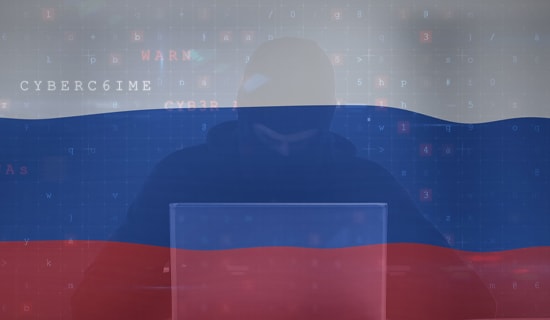Background
Fundraising campaigns began to appear at the beginning of the Russian invasion of Ukraine, when the technical backwardness of the Russian army and the armies of the LDPR – the combined people's militias of the Luhansk People's Republic (LPR), and Donetsk People's Republic (DPR) – became clear. These fundraising campaigns not new, and such campaigns also took place during the Donbass conflict that began in 2014. During the period of August 2014 to August 2015, more than 42,000 tons of aid were allocated to the LPR and the DPR.[1] In addition to humanitarian cargo, military equipment was also bought through fundraising campaigns. For example, a nationalist and fascist media outlet acquired and handed over to the republics' militia an armored personnel carrier with mounted weapons. However, after the information appeared in the media, a crowdfunding website was blocked at the request of the Russian Prosecutor's Office.[2]
In addition, after the September 21 presidential decree proclaiming "partial mobilization," and as news of the equipment problems of those mobilized appeared on the Internet,[3] wider sections of the population got involved in fundraising campaigns. Though it is impossible to say with certainty due to the inability to track many transactions and the inaccessibility of statistics, the volume of funds transferred to the army is likely, given the magnitude of the events, greater than that transferred during the earlier Donbass conflict.
Fundraising Structure
All available platforms, as well as grassroots social connections – including parent committees at schools, sports sections, etc. – are used for fundraising. The aid is collected by direct collection of necessary items – purchased equipment is transferred to an organizer of the campaign – as well as by collecting funds through Russian bank accounts, including private ones, and cryptocurrency. Financial restrictions on Russia and cases of blocking cryptocurrency accounts[4] have meant that, in most cases, most of the funds are collected in rubles to accounts opened in Russian banks.
There is also an interesting example of a cyber-attack to steal cryptocurrency. On November 17, 2022, a Telegram channel published a post claiming that a Russian neo-Nazi regiment was behind a hack of a charitable foundation website, which raises funds for the Ukrainian Army. The post refers to a statement allegedly made by the head of the regiment. It is claimed that as a result of the hack, the regiment was able to gain possession of more than $200,000 worth of various cryptocurrencies. The leader's statement on Telegram reads: "We have our own IT department and financial department, which are involved in the operations you asked about (cyber-attacks). True, the IT department's competence does include hacking enemy websites and other Internet resources, as well as other diversions in the information sphere... And the hacking of the above-mentioned resource [the charity] is just the tip of the iceberg... The financial department deals with transactions related to cryptocurrencies, gemstones, and money laundering..."

The subjects of crowdfunding campaigns can be divided into: subjects affiliated with the state, various non-governmental communities and organizations, and individuals. A charitable foundation created by the Russian Ministry of Defense to support "participants of the SVO [i.e., the Russian invasion] aimed at protection of the Donetsk and Luhansk People's Republics" is an example of subjects affiliated with the state.[5] The foundation raises money through accounts at Russian banks.

The foundation raises money through accounts at Russian banks.
Another example is a website created by a government-affiliated organization. As of November 23 the foundation's website showed several active fundraising campaigns. One of them is a fundraising campaign launched in cooperation with a Russian organization, and which had as its stated goal the acquisition of UAVs.

The ongoing fundraising campaigns at the foundation's website as of November 23.
Another website collects money through Russian banks as well. A special feature of the website is a network of real-world collection points throughout Russia, to which anyone can bring personally purchased items.

The site provides an interactive map of collection points.
Political parties also collect humanitarian aid, for example a Russian political party has opened such an initiative in the city of Volzhsk.[6]
There are also many examples of non-governmental communities and organizations raising funds. Such fundraisers often collect funds in private bank accounts or using cryptocurrencies, as do individual fundraisers. In such cases, it is difficult to judge the precise amounts of funds raised.
Numerous VK groups collect assets and equipment for soldiers. For instance, one group is focused on helping the DPR militia. The group offers various methods of transferring funds, including the mechanisms of the VK platform and by collecting money through private accounts in a Russian bank (funds can be transferred directly or through the Yandex.Money service or the telecommunications operator "Tele2"). Western Union, MoneyGram, PayPal, as well as transfer via cryptocurrency are also available on request by communicating with the group through chat or email. One can also pass on items to soldiers that have already been purchased. The group's page lists ways to donate and indicates to whom the bank account belongs.

Another example is a VK female-oriented group that gathers assets and aid to soldiers. The site tells supporters that they can send aid by, in addition to direct transfer, address parcel, by transfer to one of the known humanitarian funds for address delivery to militiamen, and by purchasing necessary goods at a distribution company, which will transfer the goods itself.

Some groups focus on helping certain cities, such as one group that is dedicated to helping the city of Pervomaissk by raising funds using two Russian banks. The previously mentioned nationalist media outlet also continues to fundraise for the war. A post published on November 11, 2022, on the group's VK page states that over a month the group had raised about $13,000 for a DPR brigade. The outlet also gathers money through a private account in with a state-owned bank. The post reads, "Over the past month thanks to your efforts we bought another jihad-mobile ("Niva" car) (named "Pogrom-4" after Yegor Pogrom), 7 radios, two generators, a batch of uniforms and many insignificant... household items that will make life easier for our fighters on the front lines. Many thanks to everyone!"

The above is also true for the Telegram platform generally, possibly even on a larger scale. For example, a fascist channel published in early October a report about a fundraising campaign for UAVs for a Russian reconnaissance detachment fighting in Ukraine. The campaign began on October 2. As of October 8, the group raised over $3,000. A post gives bank account and cryptocurrency information for donations.

A Telegram channel also raised funds via cryptocurrency. A post accepts donations using direct transfer and the services of a company called "Qiwi." Text reads, "[I appeal to you] Friends who have the opportunity to help with money... Any help is very important to us" providing cryptocurrency accounts.

A Telegram channel focusing on military analytics also conducts regular crowdfunding campaigns. On November 19, the channel published a report on funds gathered for servicemen of a particular group that trains mobilized soldiers. Funds were raised through a private account opened at a Russian bank.

Another good example is a campaign by a publishing house that uses a dedicated website to raise funds for radio equipment for their own volunteer battalion. The website reports that about $65,241 have already been collected. Supporters can transfer money directly and donate cryptocurrency. There are corresponding groups on Telegram and VK.

There are also many local initiatives. For example, in the city of Shakhty, a local newspaper in cooperation with a charitable foundation organized a collection point for humanitarian aid, and in the village of Svetloye, a local community organization is doing the same.[7] Equipment is even gathered at schools. For example, a newspaper reported on October 24 that the collection of aid for those fighting in the war was taking place in schools in a federal subject of Russia in the North Caucasus.[8]
There are also many campaigns carried out by individuals through groups on VK and Telegram. For example, a user collects humanitarian aid using his bank account. It is planned that the shipment would be sent to "the SVO zone" on December 12. The list of required goods on the user's page comprises 56 items, most of which are winter clothing and medical supplies.

Apparently, significant funds are raised by military journalists. Such a conclusion can be made based on the large coverage of some of these channels and the reports published by some of them. For example a Telegram channel has about 50,000 subscribers and collects money through a private bank account. The post published by the channel on November 4 aimed to raise 800,000 rubles, which is about $13,205, to buy a vehicle for soldiers. In about two weeks about $9,078 were raised. The post reads: "Friends, I would like to remind you of the current Fundraising campaign for Kherson area fighters! Soldiers need an additional unit of supply transport, a commercial truck with a solid bed or a diesel-powered box."

[1] Tass.ru/info/2179437
[2] Bbc.com/russian/news-40509893
[3] Bfm.ru/news/512489
[4] Coindesk.com/policy/2022/09/15/us-treasury-sanctions-russian-paramilitary-group-crowdfunding-ukraine-war-with-crypto-2/
[5] Rline.tv/news/2022-06-27-minoborony-sozdalo-fond-v-kotoryy-budet-sobirat-pozhertvovaniya-dlya-pomoshchi-uchastnikam-spetsoper/, fondzashyta.ru/
[6] Gazeta-vp.ru/v-volzhskom-sobirayut-gumanitarnuyu-pomoshh-dlya-uchastnikov-svo/
[7] Svetvest.ru/news/sogret-chastichkoy-svoey-dushi-zhensovet-svetlogo-sobiraet-gumanitarnuyu-pomoshch-dlya-uchastnikov-s/
[8] Livekuban.ru/news/specoperaciya_rf/v-shkolakh-kubani-sobirayut-gumanitarku-dlya-uchastnikov-svo
The full text of this post is available to DTTM subscribers.
If you are a subscriber, log in here to read this report.
For information on the required credentials to access this material, visit the DTTM subscription page








